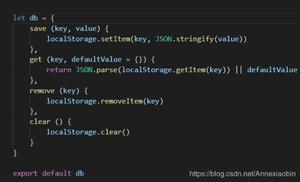在React Router上,即使页面刷新也如何保持登录状态?
我正在使用React,React Router和Redux创建一个网站。许多路由(页面)需要用户登录。如果用户未登录,则可以重定向到登录页面,如下所示:
function requireAuth(nextState, replace) { let loggedIn = store.getState().AppReducer.UserReducer.loggedIn;
if(!loggedIn) {
replace({
pathname: '/login',
state: {
nextpathname: nextState.location.pathname
}
});
}
}
ReactDOM.render(
<Provider store={store}>
<Router history={history}>
<Route path="/" component={App}>
<IndexRoute component={Index} />
<Route path="login" component={Login} />
<Route path="register" component={Register} />
<Route path="dashboard" component={Graph} onEnter={requireAuth}>
... some other route requires logged in ...
</Route>
</Route>
</Router>
</Provider>,
document.getElementById('entry')
);
请查看代码,如果用户未登录,我使用onEnter钩重定向到’/ login’路由。用于检查用户是否已登录的数据位于商店中,它将在用户登录后更新。
它工作正常,但是问题是当我刷新页面时,存储被重置并且用户未重新登录状态。
我知道发生这种情况是因为Redux存储只是内存存储,因此刷新页面将丢失该存储中的所有数据。
每次刷新时都检查服务器会话可能有效,但这可能有太多请求,因此这似乎是个坏主意。
将登录的状态数据保存到localStorage可能会起作用,但是在这种情况下,我应该检查每个AJAX调用是否失败,因为会话已过期或不存在某项请求而导致请求被拒绝,这似乎也是一个坏主意。
有没有一种方法可以更简单地解决这个问题?我的网站需要处理大量用户,因此我想尽可能减少XHR呼叫。
任何建议将不胜感激。
回答:
另一种方法是使用每个路由所需的JSON
Web令牌(JWT),并使用localStorage来检查JWT。
在前端,您具有登录和注册路由,该路由根据服务器上的身份验证向服务器查询JWT。一旦通过适当的JWT,您便可以将state的属性设置为true。您可以有一个退出路线,该路线允许用户将此状态设置为false。
包含您的路由的index.js可以在渲染之前检查本地存储,从而消除了刷新时丢失状态但保持一定安全性的问题。
您的应用程序中所有需要身份验证的路由都是通过组合组件呈现的,并通过在服务器API上进行授权的标头中包含JWT来加以保护。
进行设置需要一些时间,但是它将使您的应用程序“合理地”安全。
index.js 如下所示,在文件中路由之前检查本地存储,并根据需要将状态更新为已认证。
该应用程序通过JWT保护API的事实来维护安全性,这将解决您的刷新问题,并维护到服务器和数据的安全链接。
因此,在路线中您将具有以下内容:
import React from 'react';import ReactDOM from 'react-dom';
import { Provider } from 'react-redux';
import { createStore, applyMiddleware, compose } from 'redux';
import { Router, Route, browserHistory, IndexRoute } from 'react-router';
import reduxThunk from 'redux-thunk';
import { AUTHENTICATE_THE_USER } from './actions/types';
import RequireAuth from './components/auth/require_auth';
import reducers from './reducers';
/* ...import necessary components */
const createStoreWithMiddleware = compose(applyMiddleware(reduxThunk))(createStore);
const store = createStoreWithMiddleware(reducers);
/* ... */
// Check for token and update application state if required
const token = localStorage.getItem('token');
if (token) {
store.dispatch({ type: AUTHENTICATE_THE_USER });
}
/* ... */
ReactDOM.render(
<Provider store={store}>
<Router history={history}>
<Route path="/" component={App}>
<IndexRoute component={Index} />
<Route path="login" component={Login} />
<Route path="register" component={Register} />
<Route path="dashboard" component={RequireAuth{Graph}} />
<Route path="isauthenticated" component={RequireAuth(IsAuthenticated)} />
... some other route requires logged in ...
</Route>
</Router>
</Provider>
, .getElementById('entry'));
RequiredAuth是组成的组件,而Graphand
IsAuthenticated(可以是任意数量的适当命名的组件)都要求state.authenticatedtrue。
组件,在这种情况下Graph,IsAuthenticated 如果state.authenticatedtrue则呈现。否则默认返回到根路由。
然后,您可以构建一个这样的组合组件,通过它来呈现所有路线。在呈现之前,它将检查您所持有的用户是否已通过身份验证(布尔值)的状态为true。
import React, { Component } from 'react';import { connect } from 'react-redux';
export default function (ComposedComponent) {
// If user not authenticated render out to root
class Authentication extends Component {
static contextTypes = {
router: React.PropTypes.object
};
componentWillMount() {
if (!this.props.authenticated) {
this.context.router.push('/');
}
}
componentWillUpdate(nextProps) {
if (!nextProps.authenticated) {
this.context.router.push('/');
}
}
render() {
return <ComposedComponent {...this.props} />;
}
}
function mapStateToProps(state) {
return { authenticated: state.authenticated };
}
return connect(mapStateToProps)(Authentication);
}
在注册/登录端,您可以创建一个存储JWT的操作,并通过操作创建者->
redux存储将状态设置为已认证。本示例利用axios运行异步HTTP请求响应周期。
export function signinUser({ email, password }) { // Note using the npm package 'redux-thunk'
// giving direct access to the dispatch method
return function (dispatch) {
// Submit email and password to server
axios.post(`${API_URL}/signin`, { email, password })
.then(response => {
// If request is good update state - user is authenticated
dispatch({ type: AUTHENTICATE_THE_USER });
// - Save the JWT in localStorage
localStorage.setItem('token', response.data.token);
// - redirect to the route '/isauthenticated'
browserHistory.push('/isauthenticated');
})
.catch(() => {
// If request is bad show an error to the user
dispatch(authenticationError('Incorrect email or password!'));
});
};
}
当然,您还需要设置商店(在这种情况下为Redux)和动作创建者。
“真正的”安全性来自后端。为此,您可以使用localStorage将JWT保留在前端,并将其在标头中传递给具有敏感/受保护信息的所有API调用。
在服务器API上为用户创建和解析JWT是另一步骤。我发现护照有效。
以上是 在React Router上,即使页面刷新也如何保持登录状态? 的全部内容, 来源链接: utcz.com/qa/424095.html







